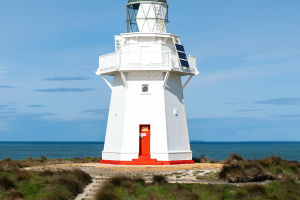Egypt, a country synonymous with ancient mysteries, pharaohs, and monumental architectural feats, stands as a beacon of historical grandeur. Amidst its vast desert landscapes and along the life-giving Nile, lie destinations that have captivated travelers for centuries.
This essay delves into two such places that offer a glimpse into Egypt's splendid past and vibrant present, revealing why they remain on the must-visit list of global wanderers.
The Great Pyramids of Giza and Sphinx: Monuments of Eternity
No visit to Egypt is complete without standing in the shadow of the Great Pyramids of Giza. These monumental tombs, built over four thousand years ago, showcase the architectural ingenuity and determination of the ancient Egyptians. The largest, the Pyramid of Khufu, is one of the Seven Wonders of the Ancient World and remains largely intact, a testament to its builders' skill.
Adjacent to the pyramids, the Sphinx, with its lion's body and a human head, stands as a guardian of these sacred grounds. Legends and mysteries shroud this colossal statue, making it a focal point of countless historical and archaeological studies.
Giza
Further south, along the banks of the Nile, lies Luxor, often referred to as the world's greatest open-air museum. This city, built on the ruins of the ancient capital of Thebes, is home to the Karnak Temple Complex and the Valley of the Kings. The Karnak Temple, dedicated to the Theban gods, is a sprawling collection of decayed temples, pylons, and other buildings. Its construction spanned over two thousand years, with each Egyptian ruler adding to the complex's grandeur.
The Valley of the Kings, on Luxor's west bank, served as a burial ground for pharaohs and powerful nobles of the New Kingdom. The tomb of Tutankhamun, discovered almost intact in 1922, is among the most famous, drawing visitors eager to see the young king's final resting place and the treasures buried with him.
Travel Considerations for Giza and Luxor
When visiting these ancient sites, it's important to be mindful of the desert climate, with early mornings or late afternoons being the best times to explore. Modest dress is recommended, and hiring a local guide can enhance the experience with insights into Egypt's history and legends. For those heading to the pyramids, camel rides offer a traditional way to see the site, but agreeing on a price beforehand is crucial to avoid overcharging. In Luxor, the use of a felucca, a traditional wooden sailing boat, provides a serene way to view the Nile and its surroundings.
To hire a local guide and book camel rides for Giza and Luxor efficiently, consider these streamlined steps:
1. Use platforms like Viator, GetYourGuide, or TripAdvisor to find reputable tour operators offering guided tours and camel rides.
2. Ask your hotel concierge where you’re staying to recommend and help book trusted local guides and camel rides.
3. Negotiate Details: For camel rides, confirm prices and duration upfront to avoid misunderstandings. When booking camel rides, especially in popular tourist spots like Giza and Luxor, it's crucial to confirm the price and duration upfront.
Typically, the cost can range from $20 to $50 per person, depending on the location and the length of the ride. Most standard camel rides last about 30 minutes to an hour, but longer excursions can also be arranged. Always make sure to negotiate and agree on the details before the ride begins to ensure a clear understanding and a pleasant experience.
Egypt's timeless allure, embodied in the pyramids of Giza and the historical depth of Luxor, offers an unforgettable journey into the heart of ancient civilizations. These destinations, rich in history and splendor, provide a window into a past that continues to fascinate and inspire.


